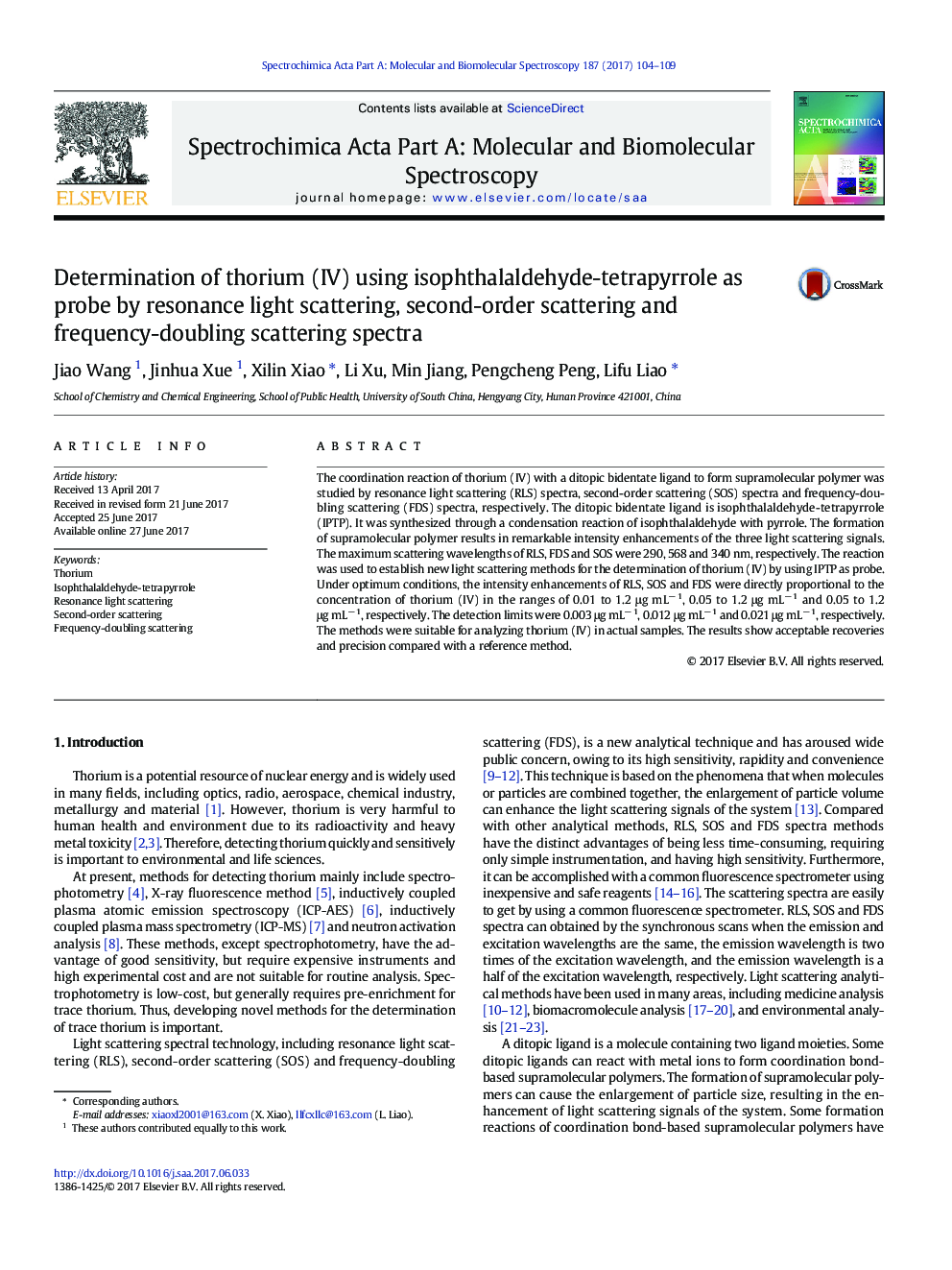| Article ID | Journal | Published Year | Pages | File Type |
|---|---|---|---|---|
| 5139563 | Spectrochimica Acta Part A: Molecular and Biomolecular Spectroscopy | 2017 | 6 Pages |
â¢A synthesized ditopic bidentate ligand as probeâ¢The ligand can chelate thorium (IV) to form supramolecular dimer and polymer.â¢The ligand is easily to be synthesized.
The coordination reaction of thorium (IV) with a ditopic bidentate ligand to form supramolecular polymer was studied by resonance light scattering (RLS) spectra, second-order scattering (SOS) spectra and frequency-doubling scattering (FDS) spectra, respectively. The ditopic bidentate ligand is isophthalaldehyde-tetrapyrrole (IPTP). It was synthesized through a condensation reaction of isophthalaldehyde with pyrrole. The formation of supramolecular polymer results in remarkable intensity enhancements of the three light scattering signals. The maximum scattering wavelengths of RLS, FDS and SOS were 290, 568 and 340 nm, respectively. The reaction was used to establish new light scattering methods for the determination of thorium (IV) by using IPTP as probe. Under optimum conditions, the intensity enhancements of RLS, SOS and FDS were directly proportional to the concentration of thorium (IV) in the ranges of 0.01 to 1.2 μg mLâ 1, 0.05 to 1.2 μg mLâ 1 and 0.05 to 1.2 μg mLâ 1, respectively. The detection limits were 0.003 μg mLâ 1, 0.012 μg mLâ 1 and 0.021 μg mLâ 1, respectively. The methods were suitable for analyzing thorium (IV) in actual samples. The results show acceptable recoveries and precision compared with a reference method.
Graphical AbstractDownload high-res image (112KB)Download full-size image
